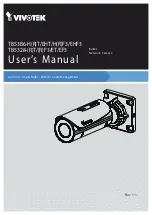
Fast Ethernet Interface Processor (FEIP) Installation and Configuration 25
Attaching Fast Ethernet Interface Cables
Connect RJ-45, SC (FEIP-1FX or -2FX), or MII cables as follows:
Step 1
If you have MII connections, attach an MII cable directly to the MII port on the FEIP or
attach a 100BASE-T transceiver, with the media appropriate to your application, to the
MII port on the FEIP. (See Figure 19 for FEIP-2TX or Figure 20 for FEIP-2FX.)
Caution
Before you attach an MII transceiver to an MII receptacle on your FEIP, ensure that your MII
transceiver responds to physical sublayer (PHY) address 0 per section 22.2.4.4. “PHY Address” of the IEEE
802.3u specification; otherwise, interface problems might result. Confirm that this capability is available on
your MII transceiver with the transceiver's vendor or in the transceiver's documentation. If a selection for
“Isolation Mode” is available, we recommend you use this setting (if no mention is made of “PHY
addressing”).
If you have RJ-45 connections, attach the Category 5 UTP cable directly to one of the
RJ-45 ports on the FEIP. (See Figure 19 for FEIP-2TX or Figure 20 for FEIP-2FX.) The
FEIP is an end station device and not a repeater. You must connect the port adapter to a
repeater or hub.
If you have an SC connection (FEIP-1FX or -2FX), attach a cable directly to the SC port
on one of the port adapters. (See Figure 20.) Use either one duplex SC connector, or two
simplex SC connectors, and observe the correct relationship between the receive (RX)
and transmit (TX) ports on the port adapter and your repeater.
Figure 19
Connecting MII or RJ-45 Cables (FEIP-2TX Shown, Horizontal Orientation)
Note
Each Fast Ethernet interface (100BASE-FX or 100BASE-TX) can have either an MII
attachment or an RJ-45 (or SC) attachment, but not both. The MII and RJ-45 (or SC) receptacles
represent two physical connection options for one port adapter.
H9784
MII cable
To transceiver,
repeater, or DTE
To repeater
or DTE
0
FAST ETHERNET
RJ-45 cable
or
0
FAST ETHERNET















































